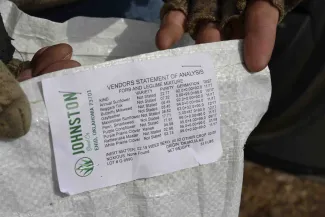Monarch butterflies have arrived in our state and the best thing Oklahomans can do to help these graceful insects is make sure flowering plants - their food source - are plentiful. Milkweeds are a staple for monarch caterpillars in the spring, but adult butterflies rely on a variety of blooms. With the help of the Natural Resource Conservation Service, landowners across Oklahoma have dedicated habitat to monarchs. The NRCS offers a number of program opportunities for landowners to improve monarch habitat on their working lands. Contact a local NRCS office for more information.
Strong northern winds and an average temperature of 44 degrees may have made for poor watching conditions for monarchs in Osage County on this year’s first day of spring, but that didn’t stop landowner Colin Berg from thinking about the colorful insect.
“I’ll be planting about three acres of wildflowers for monarchs today,” Berg said. “Ten butterfly-friendly wildflowers were chosen for the seed mixture, and they’ll be planted in long, narrow strips next to stands of native grass.”

Berg, with the help of the Osage County NRCS office, has a five-year plan to improve his monarch habitat.
“Planting wildflowers is just one way to help monarchs,” Berg said. “Prescribed burns have also been planned to improve the surrounding prairie and increase the amount of food plants available for butterflies and other wildlife.”
On the property’s north side, the two practices overlap. Berg is planting several butterfly strips next to an area that was burned a few weeks earlier.
“It will be interesting to compare the butterfly strips planted next to a recently burned area to strips that are planted next to an area that was burned last year,” Berg said.

While spring’s northbound monarchs won’t directly benefit from the newly planted seeds, their fall-migrating descendants may stop by to refuel.
“I’m excited to watch these planted strips grow in the coming months,” Berg said. “And later this year, see if any migrating monarchs visit the flowers.”